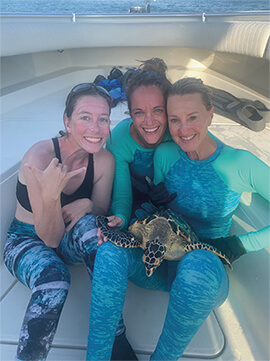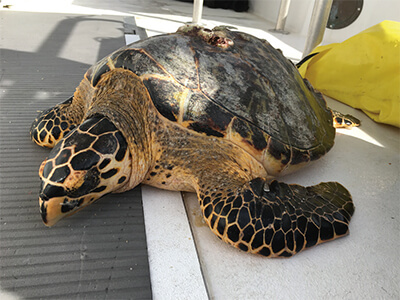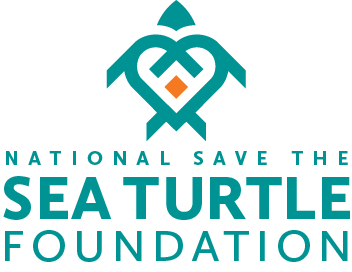The Florida Hawksbill Project: 2020 and Beyond
Larry Wood, Ph.D., Founder and Director,
Florida Hawksbill Project
Florida Hawksbill Project
The Florida Hawksbill Project finished out the decade with another successful year! Now Many thanks to the generous volunteers who donate their time to help search for hawksbill turtles! All activities authorized under State and Federal Permits.moving into its 16th year, the Project continues to gather vital information concerning the abundance and distribution of this highly endangered species in Florida waters. Since hawksbills don’t nest in Florida, it is the extensive coral reefs that line the coast from the Keys to Palm Beach County that attract them to our waters. While here, these young individuals are going through one of the most vulnerable stages of their lives, and the Project remains focused on bringing good science and public awareness to help them along their way.
Many thanks to the generous volunteers who donate their time to help search for hawksbill turtles! All activities authorized under State and Federal Permits.moving into its 16th year, the Project continues to gather vital information concerning the abundance and distribution of this highly endangered species in Florida waters. Since hawksbills don’t nest in Florida, it is the extensive coral reefs that line the coast from the Keys to Palm Beach County that attract them to our waters. While here, these young individuals are going through one of the most vulnerable stages of their lives, and the Project remains focused on bringing good science and public awareness to help them along their way.
 Many thanks to the generous volunteers who donate their time to help search for hawksbill turtles! All activities authorized under State and Federal Permits.
Many thanks to the generous volunteers who donate their time to help search for hawksbill turtles! All activities authorized under State and Federal Permits.One of the most important things we’d like to know is how many hawksbills might inhabit Florida’s waters, so we make an effort to spread the search effort to as many locations along the reef tract as possible. In 2019, we visited some new areas that included the Dry Tortugas, North Miami, and the upper Florida Keys near Key Largo and Islamorada. These surveys help us understand how the seascape and other local environmental factors may influence their distribution during the time they are visiting Florida.

Hawksbill turtles primarily inhabit Florida’s waters as juveniles, and are expected to depart for their places of origin throughout the Caribbean once they reach maturity. They are dependent upon healthy coral reefs to survive.
In 2019, myself and/or the team jumped in the water 107 times for a grand total of 4,120 minutes (68.7 hours) of seeking turtles (not adjusted for number of surveyors; if so, that number would grow substantially). We captured a total of 18 turtles, which was comprised of 14 new ones and 4 ‘recaptures’, which are ones that we had previously marked with identification tags. All four were found in their original capture locations, reinforcing our understanding of their tendency to stay in certain locations for extended periods of time. Our smallest of the year, now fondly known as ‘Baby Spice’, was 26.2 cm (shell length), and the biggest was a hefty 79.2 cm. Overall, the average size of the turtles we captured was 48.3 cm, exactly what one would expect from an aggregation of young hawksbills hanging out in their developmental habitat. These captures bring the grand total to 245 individuals we’ve been able to collect data from, which is by far the largest dataset for this species in this part of their range.
2020 is going to be an exciting year for the Project. We expect to achieve the sample sizes required to complete some of our ongoing studies concerning this population’s physiological health, movements, and behavior. We are looking forward to presenting some results of our barnacle studies at the upcoming International Sea Turtle Symposium to be held in Cartagena, Colombia, and creating new partnerships to expand our impact beyond Florida.
I would like to thank the strong support of the National Save The Sea Turtle Foundation to allow this long-term project to become even longer-term. Research conducted in the water with sea turtles is logistically challenging, very costly, and often progresses at a slow pace, but the Foundation has been able to accomodate our unusual needs patiently and enthusiastically. I’d also like to thank all the wonderful volunteers who have joined us on our survey trips, they truly make the project possible, and the Captains and Crews of all the dive boats who are so kind to welcome us aboard!
Helping Sea Turtles Survive for 39 Years
A NON-PROFIT ORGANIZATION
State of Florida Registration Number CH-2841 | Internal Revenue Code 501 (c) (3)
Web Design & Development by Web Expressions, LLC

